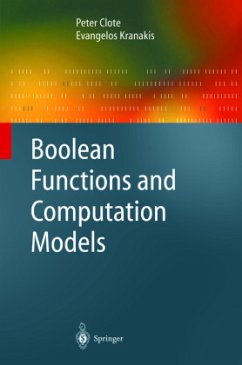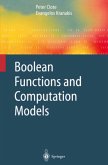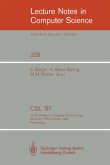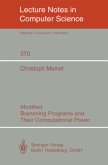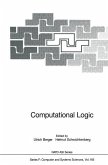This textbook presents a survey of research on boolean functions, circuits, parallel computation models, function algebras, and proof systems. Its main aim is to elucidate the structure of "fast" parallel computation. The complexity of parallel computation is emphasized through a variety of techniques ranging from finite combinatorics, probability theory and finite group theory to finite model theory and proof theory. Nonuniform computation models are studied in the form of boolean circuits; uniform ones in a variety of forms. Steps in the investigation of non-deterministic polynomial time are surveyed as is the complexity of various proof systems. The book will benefit advanced undergraduates and graduate students as well as researchers in the field of complexity theory.
The foundations of computational complexity theory go back to Alan Thring in the 1930s who was concerned with the existence of automatic procedures deciding the validity of mathematical statements. The first example of such a problem was the undecidability of the Halting Problem which is essentially the question of debugging a computer program: Will a given program eventu ally halt? Computational complexity today addresses the quantitative aspects of the solutions obtained: Is the problem to be solved tractable? But how does one measure the intractability of computation? Several ideas were proposed: A. Cobham [Cob65] raised the question of what is the right model in order to measure a "computation step" , M. Rabin [Rab60] proposed the introduction of axioms that a complexity measure should satisfy, and C. Shannon [Sha49] suggested the boolean circuit that computes a boolean function. However, an important question remains: What is the nature of computa tion? In 1957, John von Neumann [vN58] wrote in his notes for the Silliman Lectures concerning the nature of computation and the human brain that . . . logics and statistics should be primarily, although not exclusively, viewed as the basic tools of 'information theory'. Also, that body of experience which has grown up around the planning, evaluating, and coding of complicated logical and mathematical automata will be the focus of much of this information theory. The most typical, but not the only, such automata are, of course, the large electronic computing machines.
The foundations of computational complexity theory go back to Alan Thring in the 1930s who was concerned with the existence of automatic procedures deciding the validity of mathematical statements. The first example of such a problem was the undecidability of the Halting Problem which is essentially the question of debugging a computer program: Will a given program eventu ally halt? Computational complexity today addresses the quantitative aspects of the solutions obtained: Is the problem to be solved tractable? But how does one measure the intractability of computation? Several ideas were proposed: A. Cobham [Cob65] raised the question of what is the right model in order to measure a "computation step" , M. Rabin [Rab60] proposed the introduction of axioms that a complexity measure should satisfy, and C. Shannon [Sha49] suggested the boolean circuit that computes a boolean function. However, an important question remains: What is the nature of computa tion? In 1957, John von Neumann [vN58] wrote in his notes for the Silliman Lectures concerning the nature of computation and the human brain that . . . logics and statistics should be primarily, although not exclusively, viewed as the basic tools of 'information theory'. Also, that body of experience which has grown up around the planning, evaluating, and coding of complicated logical and mathematical automata will be the focus of much of this information theory. The most typical, but not the only, such automata are, of course, the large electronic computing machines.
From the reviews: "The monograph gives the most recent and complete description of lower bounds for depth-restricted circuits, and propositional proof systems. ... the authors present a research monograph on important subjects and provide many very recent results. I would recommend it for any university library and also for researchers." (Ingo Wegener, The Computer Journal, Vol. 46 (3), 2003)
